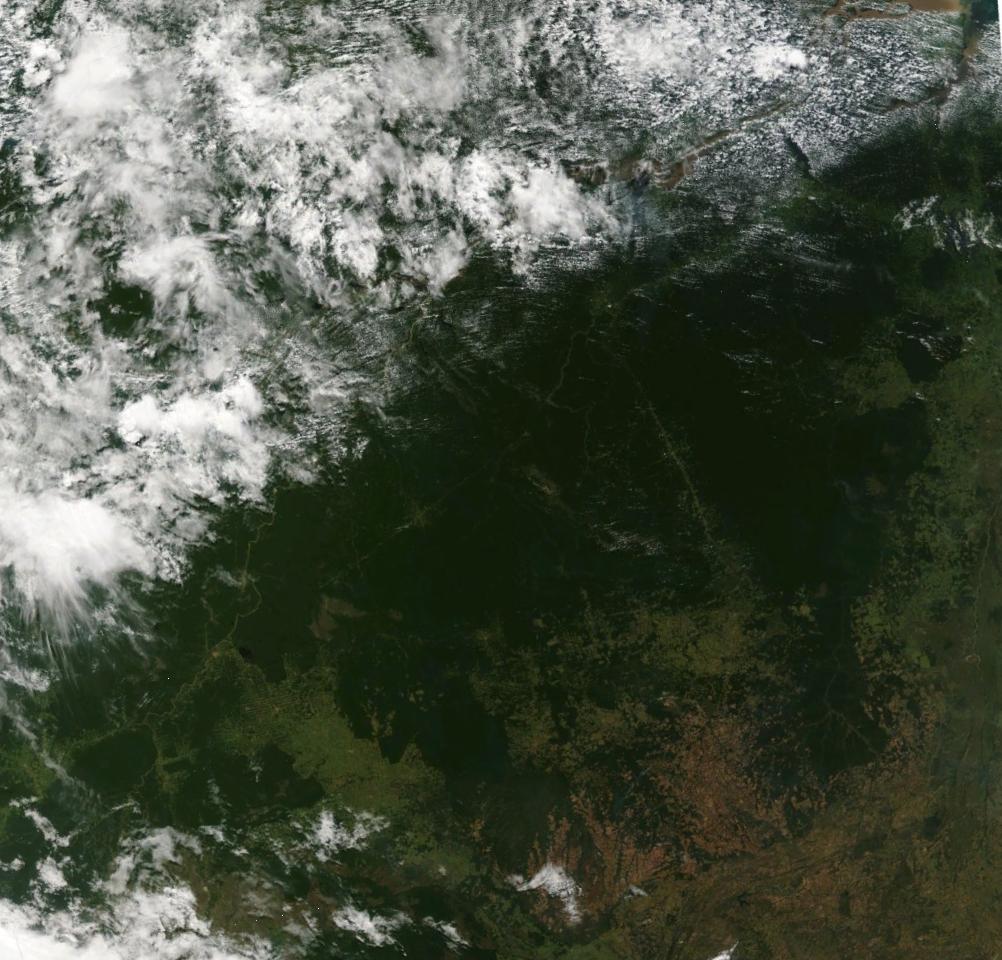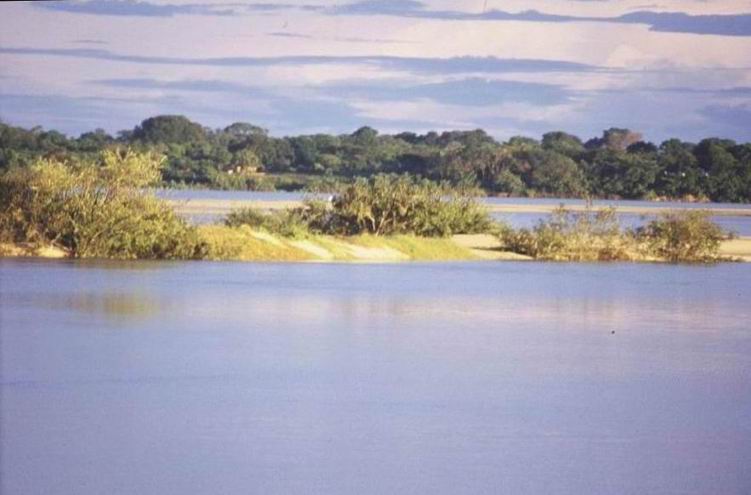|
Trans-Tocantins Languages
The Trans-Tocantins languages are a proposed subgroup of the Northern Jê languages, which comprises four languages spoken to the west of the Tocantins River: Apinajé, Mẽbêngôkre, Kĩsêdjê, and Tapayúna. It is subdivided in a binary manner into Apinajé, spoken to the east of the Araguaia River, and the Trans-Araguaia subbranch, which includes the remaining three languages. Together with the Timbira dialect continuum, the Trans-Tocantins languages make up the Northern branch of the Jê family. The defining innovations of the Trans-Tocantins languages include the replacement of Proto-Goyaz Jê and Proto-Northern Jê ''*a-mbə'' ‘eat ''(intransitive)''’ (as preserved in Canela/Krahô The Krahô (, ) are an indigenous Timbira Gê people of northeastern Brazil. The Krahô historically inhabited a portion of modern Maranhão along the Balsas River, but were pushed west by pioneer settlement and cattle farmers. Currently, the K .../ Parkatêjê ''apà'', Pyk ... [...More Info...] [...Related Items...] OR: [Wikipedia] [Google] [Baidu] |
Tocantins
Tocantins () is one of the 26 states of Brazil. It is the newest state, formed in 1988 and encompassing what had formerly been the northern two-fifths of the state of Goiás. Tocantins covers and had an estimated population of 1,496,880 in 2014. Construction of its capital, Palmas, began in 1989; most of the other cities in the state date to the Portuguese colonial period. With the exception of Araguaína, there are few other cities with a significant population in the state. The government has invested in a new capital, a major hydropower dam, railroads and related infrastructure to develop this primarily agricultural area. The state has 0.75% of the Brazilian population and is responsible for 0.5% of the Brazilian GDP. Tocantins has attracted hundreds of thousands of new residents, primarily to Palmas. It is building on its hydropower resources. The Araguaia and Tocantins rivers drain the largest watershed that lies entirely inside Brazilian territory. The Rio Tocantins ... [...More Info...] [...Related Items...] OR: [Wikipedia] [Google] [Baidu] |
Tapayúna Language
Tapayúna (Kajkwakhrattxi or Kajkwakhratxi, 'big trunk of the sky' also spelt ''Tapajúna'', Tapayúna: ''Kajkwakhrattxi kawẽrẽ'' ) is a Northern Jê language ( Jê, Macro-Jê) spoken in Mato Grosso, Brazil by the Tapayúna (Kajkwakhrattxi) people. The Tapayuna historically lived on the Arinos River, in the Tapajós basin, between Juruena and Aripuanã. They were decimated in mid-20th century as a result of numerous conflicts with Brazilian settlers, rubber tappers, and ranchers; it is estimated that their population declined 90% until reaching 41 individuals in 1969, which has been characterized as an ethnocide. The surviving Tapayúna were then transferred to Xingu Indigenous Park at some point between 1969 and 1970, resulting in 10 more deaths. At first, they stayed with the Kĩsêdjê, speakers of a closely related language. Later, many Tapayúna moved to Terra Indígena Capoto-Jarina, where they went on to live with the Mẽtyktire subgroup of the Kayapó people, ... [...More Info...] [...Related Items...] OR: [Wikipedia] [Google] [Baidu] |
Krahô Language
The Krahô (, ) are an indigenous Timbira Gê peoples, Gê people of northeastern Brazil. The Krahô historically inhabited a portion of modern Maranhão along the Balsas River (Brazil), Balsas River, but were pushed west by pioneer settlement and cattle farmers. Currently, the Krahô live on the Kraolandia, Terra Indígena Kraolândia reservation in Tocantins. The Krahô have historically been seminomadic, practicing Hunter-gatherer, hunting and gathering and shifting cultivation. Terra Indígena Kraolândia Modern Krahô live on the Kraolandia, Terra Indígena Kraolândia, an Indigenous territory (Brazil), Indigenous territory in the Goiatins and Itacajá, Tocantins near the Maranhão-Tocantins border. The territory has an area of and a population of 2992. References {{authority control Indigenous peoples in Brazil ... [...More Info...] [...Related Items...] OR: [Wikipedia] [Google] [Baidu] |
Canela Language
Canela is a dialect of the Canela-Krahô language, a Timbira variety of the Northern Jê language group ( Jê, Macro-Jê) spoken by the Apànjêkra (Apaniêkrá) and by the Mẽmõrtũmre (Ràmkôkãmẽkra, Ramkokamekrá) in Maranhão, Brazil. The Kenkateye dialect has been extinct since 1913 due to the massacre of the tribe by cattle ranchers. Phonology Vowels * Consonants * Stop sounds /p, t, k/ can be heard as voiced , d, ɡin syllable-initial position within unstressed syllables, following voicing and in syllable-final position following voicing. * A velar nasal /ŋ/ can fluctuate in free variation with a prenasalized and voiced plosive �ɡ~ɡbetween dialects. * /t͡s/ is recognized as a post-alveolar /t͡ʃ/ among dialectal differences. * /n, m/ can be heard as prestopped ��n, ᵇmwhen after oral vowels. * /v/ is only heard in syllable-initial position, elsewhere it is pronounced as * /j/ is heard as when in final position of consonant clusters and in ... [...More Info...] [...Related Items...] OR: [Wikipedia] [Google] [Baidu] |
Timbira Language
Timbira is a dialect continuum of the Northern Jê language group of the Jê languages ̣( Macro-Jê) spoken in Brazil. The various dialects are distinct enough to sometimes be considered separate languages. The principal varieties, Krahô Laurie Bauer, 2007, ''The Linguistics Student’s Handbook'', Edinburgh (Craó), and Canela (Kanela), have 2000 speakers apiece, few of whom speak Portuguese. Pará Gavião has 600–700 speakers. Krẽje, however, is nearly extinct, with only 30 speakers in 1995. Timibira has been intensive contact with various Tupi-Guarani languages of the lower Tocantins- Mearim area, such as Guajajára, Tembé, Guajá, and Urubú-Ka'apór. Ararandewára, Turiwára, Tupinamba, and Nheengatu have also been spoken in the area. Some of people in the area are also remembers of Anambé and Amanajé. Varieties Linguistic varieties of Timbira include: * Canela (subdivided into Apànjêkra and Mẽmõrtũmre (a.k.a. Ràmkôkãmẽkra)), 2,500 speaker ... [...More Info...] [...Related Items...] OR: [Wikipedia] [Google] [Baidu] |
Araguaia River
The Araguaia River ( , Karajá language, Karajá: ♂ ''Berohokỹ'' [beɾohoˈkə̃], ♀ ''Bèrakuhukỹ'' [bɛɾakuhuˈkə̃]) is one of the major rivers of Brazil, and a tributary of the Tocantins River. Geography The Araguaia River comes from Goiás-Mato Grosso south borders. From there it flows northeast to a junction with the Tocantins River, Tocantins near the town of São João. Along its course, the river forms the border between the states of Goiás, Mato Grosso, Tocantins and Pará. Roughly in the middle of its course the Araguaia splits into a fork (with the western stream retaining the name Araguaia and the eastern one being called the Javaés River). These later reunite, forming the Ilha do Bananal, the world's largest river island. The vein of the Javaés forms a broad inland where it pours back into the main Araguaia, a 100,000 hectare expanse of igapós or flooded forest, blackwater river channels, and oxbow lakes called Cantão, protected by the Cantão State Par ... [...More Info...] [...Related Items...] OR: [Wikipedia] [Google] [Baidu] |
Tocantins River
The Tocantins River ( , Parkatêjê dialect, Parkatêjê: ''Pyti'' [pɨˈti]) is a river in Brazil, the central fluvial artery of the country. In the Tupi language, its name means "toucan's beak" (''Tukã'' for "toucan" and ''Ti'' for "beak"). It runs from south to north for about . While sometimes included in definitions of the Amazon basin, the Tocantins is not a branch of the Amazon River, since its waters flow into the Atlantic Ocean via an eastern channel of the Amazon Delta, alongside those of the Amazon proper. It flows through four Brazilian states (Goiás, Tocantins, Maranhão, and Pará) and gives its name to one of Brazil's newest states, formed in 1988 from what was until then the northern portion of Goiás. The Tocantins is one of the largest Clearwater river (river type), clearwater rivers in South America. Course It rises in the mountainous district known as the Pirineus State Park, Pireneus, west of the Federal District, but its western tributary, the Araguaia Ri ... [...More Info...] [...Related Items...] OR: [Wikipedia] [Google] [Baidu] |
Pará
Pará () is a Federative units of Brazil, state of Brazil, located in northern Brazil and traversed by the lower Amazon River. It borders the Brazilian states of Amapá, Maranhão, Tocantins (state), Tocantins, Mato Grosso, Amazonas (Brazilian state), Amazonas and Roraima. To the northwest are the borders of Guyana and Suriname, to the northeast of Pará is the Atlantic Ocean. The capital and largest city is Belém, which is located at the Marajó bay, near the estuary of the Amazon river. The state, which is home to 4.1% of the Brazilian population, is responsible for just 2.2% of the Brazilian GDP. Pará is the most populous state of the North Region, Brazil, North Region, with a population of over 8.6 million, being the ninth-most populous state in Brazil. It is the second-largest state of Brazil in area, at , second only to Amazonas (Brazilian state), Amazonas upriver. Its most famous icons are the Amazon River and the Amazon rainforest. Pará produces Natural rubber, rubber ( ... [...More Info...] [...Related Items...] OR: [Wikipedia] [Google] [Baidu] |


